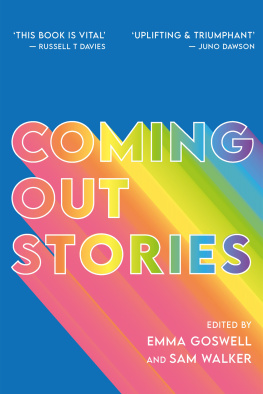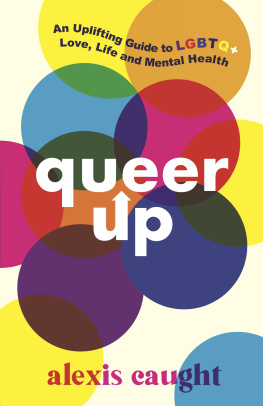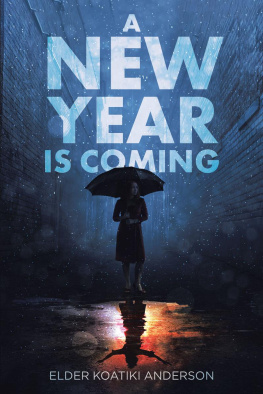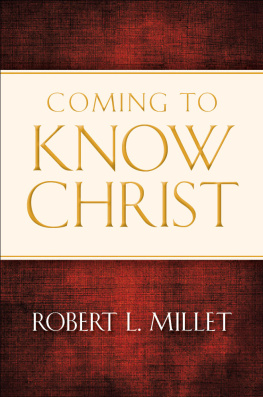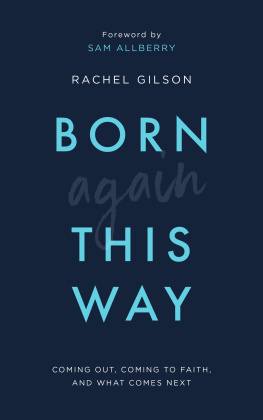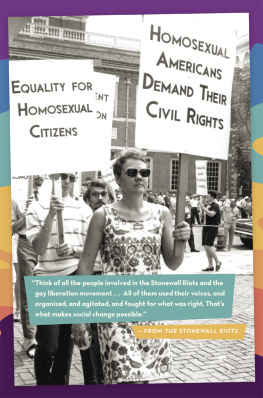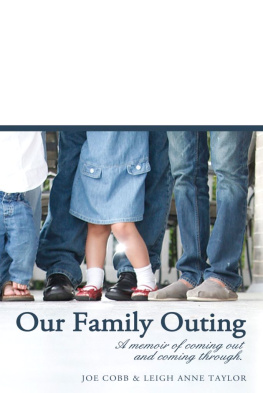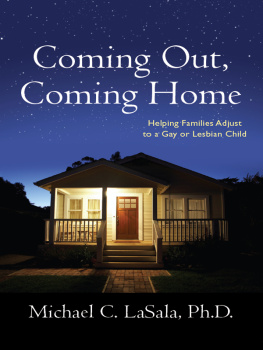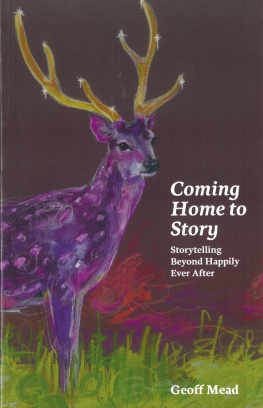Contents

COMING OUT
STORIES
Personal Experiences of Coming Out from
Across the LGBTQ+ Spectrum

Edited by Emma Goswell and Sam Walker
Foreword by Tim Sigsworth MBE

Contents
Foreword
As someone who has worked and volunteered within the LGBTQ+ community for over 30 years, I have had the privilege of hearing people coming out to me throughout my adult life. Those stories have stayed with me and inspire me when I support others on the journey to coming out to their family, friends and others.
This book is an absolute joy, for whilst every story is different and people share both good and bad experiences of coming out, what every story does include is that first step on the journey self-acceptance. This pride in who you are is essential because, as so many people have said before, if you cant love yourself, how is someone else going to love you? Getting over our own inability to accept ourselves or any feelings of shame, as Kate retells in her story, is often the first step. These stories will, I hope, inspire many more LGBTQ+ people to find and accept themselves, to realize that they are not alone, that others have walked this well-worn path and, as I can confirm, that things do get better when we can be open and honest with ourselves and others about who we really are.
Emma Goswell and Sam Walker have spent their professional lives within the media being strong and passionate voices for the LGBTQ+ community, and I am proud to call them activists. They have both been a personal inspiration to me and to many others, and that is why this book is such a strong and important message to anyone who is thinking about coming out and/or feels alone and isolated, as well as being a call to action to allies who can provide support on the journey.
This book is not the painful retelling of the stories of victims. As Bills story shows, even 47 years ago in a more challenging world for the LGBTQ+ community, some people did come out and receive love and support. We see amongst these pages 27 people who were, and are, incredibly brave and proud advocates who are living their lives fully. There is so much love, hope and humour in this book. It reflects not only the character of each writer but also the character of our community, which absolutely owns the trademarks to camp, the rainbow and a joy for living.
We are not told the current age of most of the people featured here. This for me captures the timelessness of these stories. They echo the stories I heard as a young man in the mid-1980s and I still recognize the words in the young people who come through our door at the national LGBTQ+ youth homelessness charity akt (Albert Kennedy Trust), where we support young people who are seeking a safe place to stay after suffering rejection and often abuse from their families after coming out to them. The fact that, for some, coming out remains a difficult and painful process highlights the real need today for books like this which give hope, support and guidance.
This selection of stories acknowledges that no two journeys to accepting and being who we are will ever be the same. However, they all show that the challenges are outweighed by the hope for, and the reality of, a better future.
These 27 people have freely given a very personal insight into their lives. Therefore, I believe I should say something about my story. As a teenager I helped care for my father in his last years of life, whilst having a very difficult relationship with my mum. My much older siblings had left home already and I remained at home with my parents. My mum behind closed doors was mentally cruel to me both before, and especially after, I came out. At 15 I was so unhappy that I wanted to take my own life. I am so thankful to the person who helped me accept and love who I was at that point and stop myself. I kept this and my mums behaviours hidden from my friends who came to visit, and when my dad died, I took the opportunity to go to university and leave that family life behind me.
Every coming out story is unique, and these stories show that clearly. However, they do contain some key elements. For example, Carls story recognizes the double life we often lead before coming out and the pain that causes us and sometimes others in our life. His story also captures the amazing new journey we can open ourselves up to once we find the love and support to come out.
Ultimately, people must come out when they are ready. Whilst many people in this book were in their teens and twenties, some, like Kerry, realized later in life who they were. Others chose to wait until their personal circumstances had changed. I remember one man who waited until he was 60, by which time his mother had passed away.
Many people have to find the best moment when they feel safe to come out and be themselves; in some cases, this can be during the most bizarre situations. I remember one person telling me they came out to their dad whilst they were both paintballing, as they figured that he was having too much fun and was too preoccupied to react badly. There are so many ways to come out as these peoples stories show, from email, phone and in person theres no right way other than feeling safe with your choice.
It is so important, as our community recognizes how beautifully diverse it is, that this book has captured people who identify across the intersections of gender, race, sexuality, faith, age and disability. Many people who come out face a more complex journey for example, Enoch, GJ and Asad describe in their stories how they faced not only the potential of rejection by their family but also the loss of the wider cultural or faith community they were part of. This can include people being faced with painful choices between remaining part of a religious household or being who they are. Whilst many parents find ways to make adjustments in their approach to their faith in order to keep their love for their child strong, where this does not occur an LGBTQ+ person can find that their whole support system, which is wrapped up in their faith and community, has been lost when they come out.
Love it or hate it, some of the people in this book found their acceptance, friends and even safe home amongst the LGBTQ+ bars, clubs and cafs within their local gay scene. Indeed, for some of the storytellers in this book who came out pre-internet, this was a crucial lifeline in becoming their true selves.
I would recommend this book not just to LGBTQ+ people but to their parents in particular, as these stories give people a privileged insight into the worlds of 27 incredible LGBTQ+ people. I remember one mother I comforted who found out her son was gay in the most tragic way through his suicide note. He wrote: I didnt want to bring shame and disappointment into your life by telling you who I am. I love you, Mum. She said she had always known he was gay but just didnt know how to bring it up in conversation. For those parents who pick up this book, I hope you find the words amongst these incredible peoples stories to have that first conversation with your child. There are also, of course, organizations like FFLAG out there, run by other parents who can help you find the words you need to talk with and support your child as they come out.
We never stop coming out to people in our lives, and this book is a reminder that sometimes it can be a joyous thing, a realization of just how much those around us love and understand us. However, for some of us, it can be a painful realization that, whilst we have the acceptance of many, we still have a long way to go in securing the respect and equity which is our right in society.

